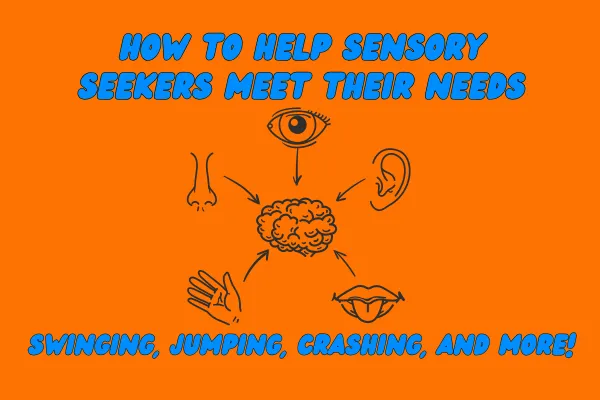
Sensory Seekers
Raising a Sensory Seeker: What Every Parent Should Know (and Do)
Children who are always moving, chewing, jumping, or crashing into things aren’t necessarily “hyper”—they may just be sensory seekers. And for these kids, meeting their sensory needs isn't optional—it's essential.
In a video by Rachel and Jessica, Certified Occupational Therapy Assistants at Harkla (https://www.harkla.co/), they walk parents through the signs of sensory-seeking behavior and share five sensory-smart activities to help these children feel more grounded and regulated.
As childcare providers, we see sensory-seeking behaviors every day—and we know how misunderstood these children can be. With the right support, though, sensory seekers can thrive.
What is a Sensory Seeker?
Sensory seekers crave more input from their environment. They might:
* Be constantly in motion
* Mouth or chew on non-edible items
* Seem to need louder, faster, stronger experiences than other kids
* Fidget, make noises, or appear to have boundless energy
These behaviors aren’t “bad.” They’re signs that your child’s nervous system is asking for help processing the world around them. Read on for sensory activity ideas, and action steps!
5 Activities for Sensory Seekers
(Shared by Harkla, summarized here)
1. Swings – Support vestibular input by swinging in different directions (sideways, stomach-down, spinning).
2. Jump & Crash – Use pillows, bean bags, trampolines, or couch cushions to let kids safely jump and crash.
3. Resistive Oral Input – Offer gum, chewy snacks, or vibrating tools to reduce shirt-chewing or mouthing behaviors.
4. Proprioceptive Play – Bear walks, weighted blankets, animal walks, or “heavy work” to help kids regulate after high energy.
5. Sensory Bins – Create sensory experiences with rice, beans, or water beads. Hide items inside and turn it into a game.
You can check out Rachel and Jessica’s full video here: (https://www.youtube.com/@harkla) and find their free sensory checklist to better understand your child’s needs. But what steps can you take now, as a parent?
3 Action Steps for Parents of Sensory Seekers
1. Observe your child’s patterns.
Not all sensory seekers look the same. Some crave movement, while others seek deep pressure or oral input. Try using Harkla’s Sensory Preference Checklist (https://www.sensationalbrain.com/) to identify your child’s unique sensory profile.
2. Build sensory breaks into your day.
Short, structured sensory activities can help your child feel more regulated—especially during transitions like arriving at daycare or winding down before dinner. Think: 10 minutes of swinging, a mini obstacle course, or a chewy snack.
3. Communicate with your care team.
If your child is in daycare or starting kindergarten soon, talk with their teachers and caregivers about their sensory needs. We’re here to support them—and you. A shared plan makes a big difference.
Final Thoughts
Sensory seekers don’t need to be “fixed”—they need to be understood. When you meet your child’s sensory needs with intention and love, you help them regulate, learn, and grow with confidence.
At Wild Wonders Daycare, we honor every child’s nervous system, whether they're tactile explorers or deep-pressure lovers. We work hand-in-hand with families to create an environment where all children feel calm, curious, and capable.


